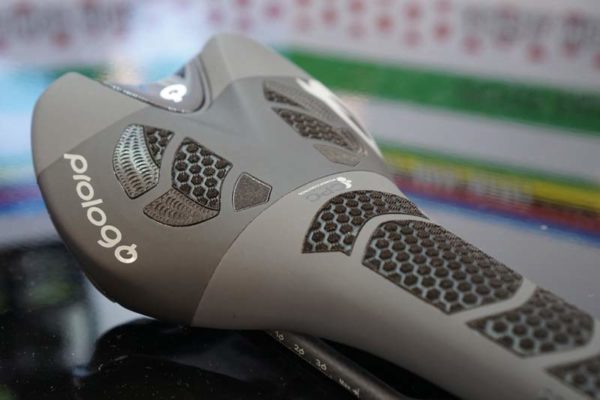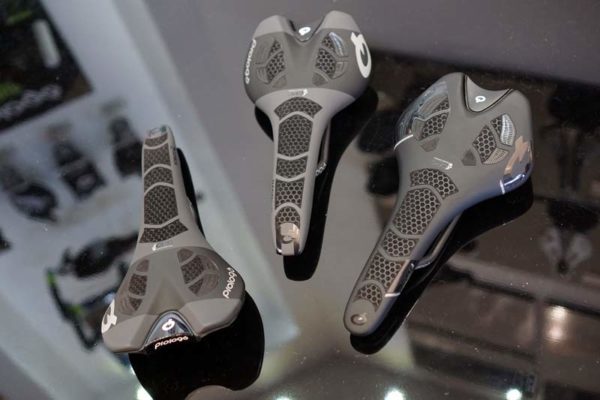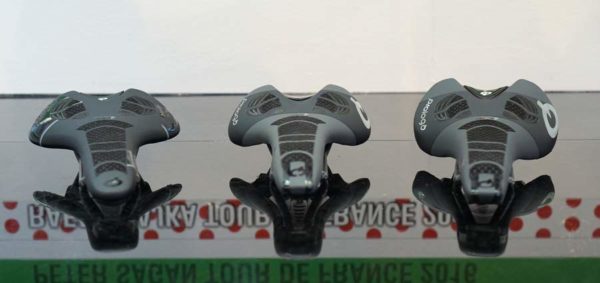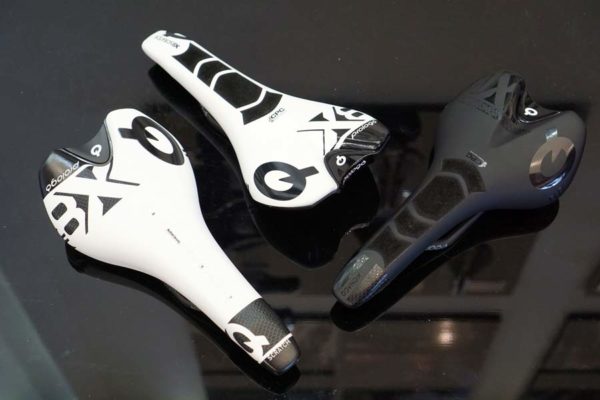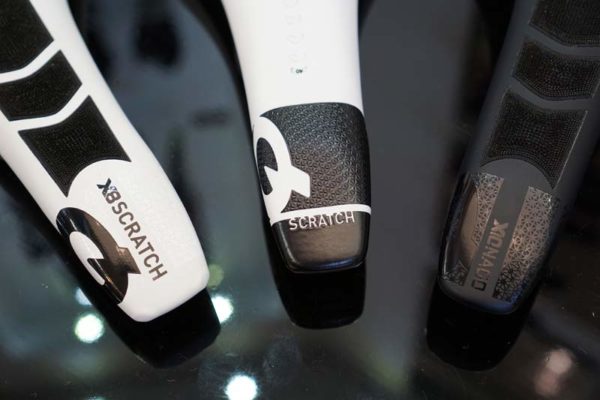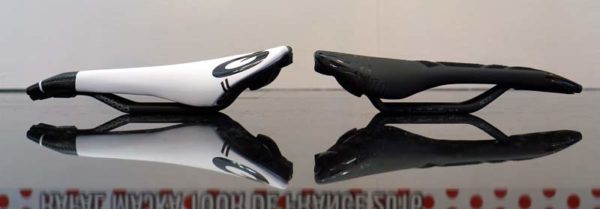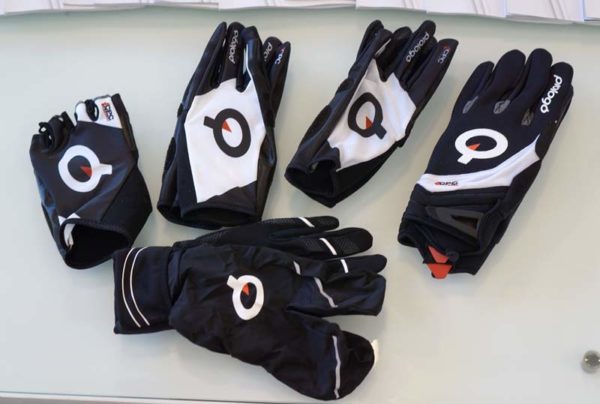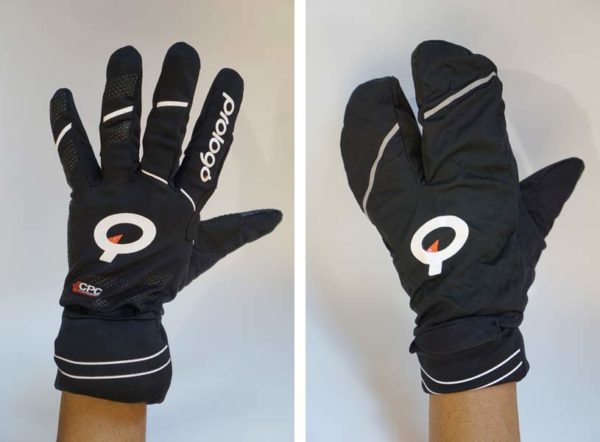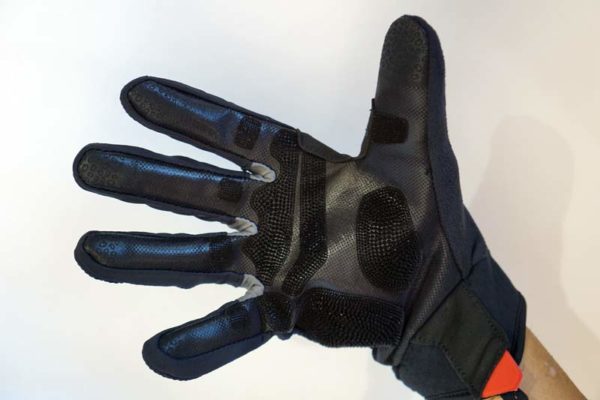Prologo has created an updated version of their F1-inspired vibration damping material called CPC Airing. It’s the same base material, but put into a new structure that gets 10-12% better shock absorption, and air flow is better to help keep you cooler.
It’ll only come on the carbon railed top models of the Scratch 2 (rounded shape), Nago C3 and Nago Evo (semi round shape), and Zero C3 and Zero II (flat shape). The Nago C3 is new, giving that model the “Carbon Composite Compounds” full carbon rails and shell. That’s an upgrade from the carbon injected nylon shells on the next level down.
Saddles are offered in 134mm and 141 or 143mm widths, depending on model. Like many other saddle brands, they have a fit system to help you determine which shape and width is right for you, and stocking dealers should have the MyOwn fit system in their stores.
The Nago C3 CPC comes in at just 153g (claimed), and the non-CPC Nago C3 drops down to a mere 139g. The Zero C3 CPC is 164g, and the Scratch 2 CPC is 194g.
The Scratch X8 mountain bike saddle brings their rounded shaping to the dirt. It has a slightly wider nose than the road saddles (and its own prior version), helping improve stability on the bike and making it easier to steer with your hips. Foam is more dense, too. Available with or without CPC. Here, that material is only on the front of the saddle for climbing, but not on the back so you can get off the back easily. It’s aimed at long distance, marathon riders. Weights are 212g for carbon rails, 239g for TiroX (a light alloy steel).
Nago X10 is more of an XC / trail design that’s easier to move around on. Available with or without CPC.
Graphics get updated, switching from the red color hits and logos to more black on black or white, making it easier to match you bike. New chromoly rail options on the low end bring the price down a bit, too.
Prologo’s made gloves with their CPC material for years, and now there’s a slick new winter thermal glove that builds in a hidden lobster-shape wind shell.
The wind- and waterproof shell tucks into the wrist cuff (which can be done much more neatly and flatter than what’s shown here).
The CPC on the gloves is not only grippy, but also mitigates vibrations at the other main contact point.
